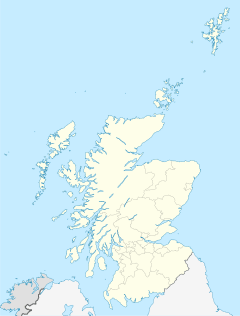Elphinstone, East Lothian facts for kids
Quick facts for kids Elphinstone |
|
|---|---|
 |
|
| Population | 590 (2020) |
| OS grid reference | NT396702 |
| Council area |
|
| Lieutenancy area | |
| Country | Scotland |
| Sovereign state | United Kingdom |
| Post town | TRANENT |
| Postcode district | EH33 |
| Dialling code | 01875 |
| Ambulance | Scottish |
| EU Parliament | Scotland |
| UK Parliament |
|
| Scottish Parliament |
|
Elphinstone is a small village in East Lothian, Scotland. It is located southwest of a town called Tranent. Near the village, you can find the old ruins of Elphinstone Tower. This tower was once the home of the important Elphinstone family.
Contents
What Does Elphinstone Mean?
The name Elphinstone was first written down in the 1200s. It might mean "Ælfwine's estate." This comes from an old English phrase, Ælfwinestun.
There is also a fun local fairy tale about the name. It says the village was named after an elf. This elf was trapped in stone by a witch he had upset!
A Glimpse into Elphinstone's Past
In 1546, a famous religious reformer named George Wishart was brought through Elphinstone. He was on his way to St Andrews where he faced a trial.
Between 2011 and 2018, the number of people living in Elphinstone grew. The population went from 520 to 590 residents.
What Can You Find in Elphinstone Today?
Elphinstone has some helpful places for its residents. These include a primary school for younger students. There is also a community centre where people can gather. You can find a newsagent for daily needs and a miners welfare club.
Elphinstone's Landmarks and Jobs
Exploring Elphinstone Tower
About half a mile west of the village are the ruins of Elphinstone Tower. This tower was built a long time ago, between the 1200s and 1400s. It used to be five storeys tall. Now, only the lowest level remains. The Elphinstone family, who lived in the area, took their name from these lands.
Work and Economy in Elphinstone
In the past, the main jobs in Elphinstone were in the mines. These mines were owned by the Edinburgh Colliery Company, Limited. Many of the houses in the village were also owned by this company.
Today, a company called Inveresk Research International is one of the main employers nearby. Elphinstone Tower Farm also helps the local economy. It grows different types of cereal crops.
See also
 In Spanish: Elphinstone para niños
In Spanish: Elphinstone para niños



